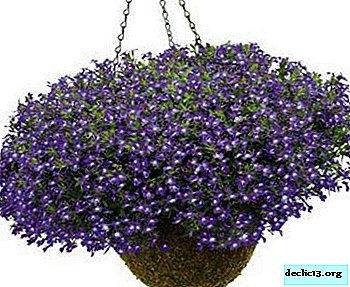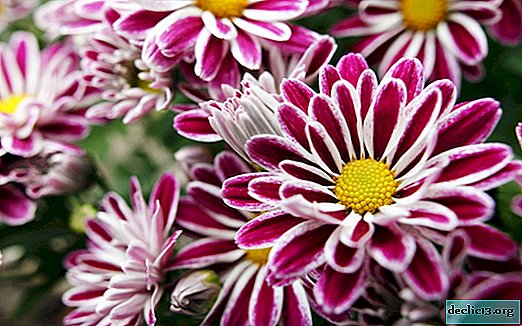Have you seen how the agave blooms? Home Care Tips and Plant Photos
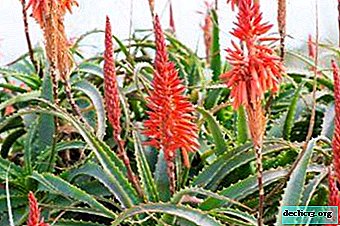
Agave - as the people call aloe vera (about how the agave differs from the usual aloe, read in this article). It has become one of the most popular plants on the windowsills of apartments due to its medicinal properties and unpretentiousness in care (you can read about medical recipes from the agave here, and here you will find useful recipes for traditional medicine with aloe tree-like).
The name of this plant is familiar from childhood and, nevertheless, the phrase "aloe blossoms" is greeted by many with surprised eyes.
Under natural conditions, this is a standard phenomenon, but in apartments the plant rarely blooms and requires certain conditions.
In the article, we will tell you how to properly care for aloe so that it will delight you with its flowers.
Description of Blooming Aloe
Aloe refers to evergreens, reaching three meters in height.
On a straight branchy stem, greenish succulent leaves are alternately located with pointed tips in a chaotic order. Aloe has not very large tubular flowers. They can be painted in red, orange, white or yellow. Large flowers are on the peduncle, similar to a vertical long arrow pointing up. At the top, flowers are collected in a bunch of inflorescences. The flowers themselves are like bells rolled into a tube.
The plant usually blooms in winter. The duration of flowering depends on the duration of daylight hours. This is an average of three months.Photo
The following shows how aloe blooms in the photo:




How to care at home?
With proper care, the plant can give flowers at home. Agave is very fond of light. In order for it to bloom, at least 8-10 hours a day are needed. To do this, it is advised to place the plant on window sills or balconies on the south side of the building.
Important: with a small amount of light, the leaves of the agave stretch and lose their color, becoming a pale green color.In the warmer months, you can transfer aloe to the air. Agave in the fresh air has clear differences from plants grown in enclosed spaces. It acquires more powerful spines, and the stem is also well formed. Also in summer, aloe should be well watered. Good watering for aloe is 1-2 times a week. In winter, it is 1-2 times a month.
Watch the plant carefully. It will tell you how much water he needs. If the leaves become thin, it means that there is not enough juice in them and the amount of water to water should be increased. Ideally water the agave as follows:
- Pour water at room temperature into the pan.
- Spray the leaves of the plant from the spray.
- After 30 minutes, pour the remaining water out of the pan.
- If there is no water left in the pan, pour more and wait 10-15 minutes. Then pour out the leftovers.
Feeding should be done once a month. To do this, use mineral fertilizer for succulents and cacti (make a very weak solution). Gardeners advise to finish feeding by the end of autumn, and start again only in spring.
And a few more growing rules:
- A mixture of soil for the agave (as well as other types of aloe) should be light, with the addition of charcoal or brick chips.
- Peat is not recommended to be added to this mixture, since it negatively affects the development of the root system of the plant.
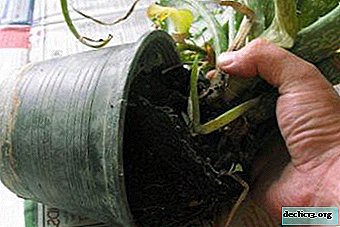 The plant requires constant transplants. A young agave needs to be replanted every year, choosing a spacious pot, and elderly aloe (more than five years) no less than once every three years.
The plant requires constant transplants. A young agave needs to be replanted every year, choosing a spacious pot, and elderly aloe (more than five years) no less than once every three years.- Aloe is prone to disease, and the most common of these is dropsy. This disease is not treatable, and in order to avoid the spread of infection, young shoots must grow separately from older plants.
- The temperature at which aloe blooms is 10-15 degrees.
Also necessary in autumn, increase the amount of water for irrigation and fertilize the plant every 2 weeks. After a month, gradually reduce the amount of water and fertilizer. To reach the watering mark - 1 time per month, fertilizer - 0 times per month. If everything was done right, then in December, aloe will give the first arrows with buds.
Read more about the rules for caring for the agave here.
How does flowering occur?
The flowering of the agave takes a long time. Peduncle appears in the upper leaves, most often one, but in rare cases more. Most often, flowering is observed in the winter. This usually happens in the month of December. And it blooms until the end of January.
Aloe ejects an arrow on which flowers are formed in the form of elongated bells. Flowers form an elongated cylinder on long stems. Aloe tree-like flowers range from pink to reddish hues, less often you can see orange flowers. Depending on the length of daylight hours, the flowering period of the plant and the time at which it begins to serve the first buds depend.
We offer you to watch a video about flowering agave:
Negative factors
- Is there proper watering, top dressing, hydration, but the plant does not bloom? There are several reasons that can interfere with flowering. The main factor among them is a small amount of sunlight. After all, it is impossible to keep track of exactly how many hours a day a plant is exposed to sunlight.
- Another factor that creates inconvenience for flowering plants is a narrow pot. Aloe grows very quickly, and if it is crowded in his new "home", the plant sees no reason to breed. It is advisable to transplant the plant in spring, immediately diluting the soil with top dressing.
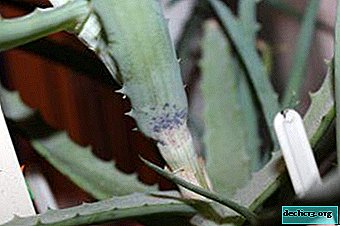 And the third of the most obvious reasons is pests. This can be a mealybug or thrips that feed on the plant's root system. In these cases, aloe is enough to rinse and transplant into new soil.
And the third of the most obvious reasons is pests. This can be a mealybug or thrips that feed on the plant's root system. In these cases, aloe is enough to rinse and transplant into new soil.
When damaging the plant with a spider mite, you can use insecticides such as Akarin or Actellik.
The significant minus is that after the disease, the plant can only bloom, recovering, in the next winter.
What's next?
After flowering, the agave forms a fruit - an oblong box with three faces, however, they are very smooth and almost invisible. Inside the capsule, the seeds ripen in an amount depending on the age of the plant young or old (the older - the more). They have a grayish or black tint. Aloe propagates vegetatively, creating a family of bushes (for the reproduction of the agave, see here). Young shoots are advised to gradually be planted from mature plants.
If you follow the agave and properly care for it, then it will delight you almost every year. So, contrary to popular belief, you do not have to wait a hundred years until the agave blooms, but push the plant yourself to this amazingly beautiful period.

 The plant requires constant transplants. A young agave needs to be replanted every year, choosing a spacious pot, and elderly aloe (more than five years) no less than once every three years.
The plant requires constant transplants. A young agave needs to be replanted every year, choosing a spacious pot, and elderly aloe (more than five years) no less than once every three years. And the third of the most obvious reasons is pests. This can be a mealybug or thrips that feed on the plant's root system. In these cases, aloe is enough to rinse and transplant into new soil.
And the third of the most obvious reasons is pests. This can be a mealybug or thrips that feed on the plant's root system. In these cases, aloe is enough to rinse and transplant into new soil.